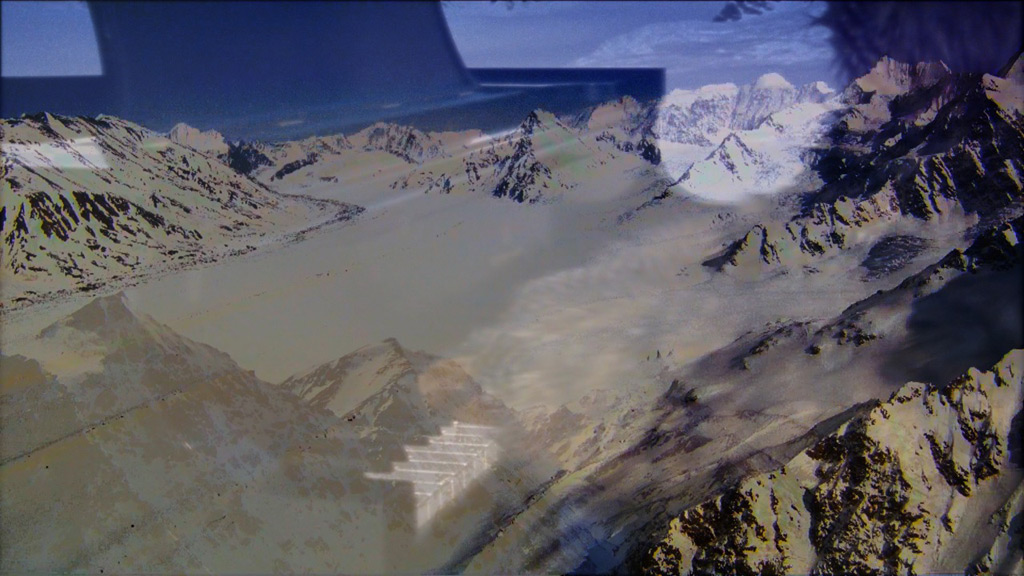The Music of the Spheres
There are many wonderful visionaries who have brought us closer to the great revelations contained in classical music: Leonard Bernstein, in the video and book of his Norton Lectures, The Unanswered Question; Michael Tilson Thomas, in his videos explaining Mahler and Tchaikovsky; Ben Zander, in his videos explaining Mahler; and the extraordinary books exploring the roots of musical creativity, such as, among others, Wolfgang Hildesheimer’s Mozart, Russell Sherman’s Piano Pieces, Paul Roberts’ Images: The Piano Music of Claude Debussy. Anyone who wants to open the doors of the meaning behind music should begin there.

In the Yeti videos, I’ve picked a few classical pieces to serve as a path into their mountainous worlds. Here is a quick summary of the musical themes; a more detailed explanation can be found in each chapter.
1. Dawn
Music is about more than music. As someone said of the piano playing of Artur Schnabel, “Music was just the start of it.” Music is descended from sub and supersonic frequencies exhibited by orbits, gravity, planets, atmospheres, magnetic fields, sunspots, and stars. These strange attractions seem to bind our world; music traces their invisible strings. NASA’s Voyager 1 and 2 recorded orbital frequencies, or vibrations produced by the solar wind interacting with the magnetic auras of the planets, as well as radio waves pinging between planets and their atmospheres. These auditory mirrors provide a link, through music, to invisible forces which dictate our lives, as music itself provides a bridge to the harmonies which link us to the rumbling of cosmic gears.
2. The Metronome
The Yeti stalks and destroys a metronome, as if to say that time is an artificial overlay which distances us from the timeless aspects of the universe and our part in it. Musicians must grow beyond notes, rhythms, measures, and the easy rules of harmony to get inside the flexibility of time, to let music breathe, tremble, stop and start the way lives do, so that music can open up a more fractal, less rigid way of seeing and hearing. In bed at night, we travel back and forth through our lives, linking thoughts without any barriers of time. The slow chronology where a sonata moves inexorably through tired formulas of harmonic development make music as dull as musicology, not as light as thought. Harmony is at best a tumbling snowball of chaos and structure, at worst a cliché of outmoded pedants.
3. Zarathustra
Richard Strauss wrote Also Sprach Zarathustra to illustrate how man’s evolution leads through chaos into salvation. As the newest species on the planet, humanity is much given to violence and chaos. But we have also produced Mozart, Beethoven, Shakespeare, Nabokov, Monet. So it comes as no surprise that the only way out of our genetic history is through thought. Without thought, there would be no electricity, no wheels, no phones, no computers, no pianos. No music, no movies. In short, no art. People call art lying before they come to believe in it. We each have a melody, a painting, a book which opens up the world for us, makes us hope or dream. We cherish those thoughts in our deepest and most private moments. They are more than real for us. They take us out of the the chaos of nations, the brutality of neighbors, towns without pity, events without values. We all have that song, that movie, that poem which is our mantra, or sanctuary, our inspiration, even when we believe in nothing else. Radio seems real enough until we enter a tunnel and it disappears. Whether it’s the Nutcracker, Kenneth Branagh’s Hamlet, Radu Lupu’s Brahms, Krystian Zimerman’s Chopin, Elizabeth Leonskaya’s Schubert, Bram Stoker’s Dracula, Anna Netrebko’s Adina, Nabokov’s Lolita, there is some entirely artificial construction which for us has become a super reality, which gives us a reason to live or marvel.
People in concentration camps have turned to poetry, music, stories, to transcend the horror of their reality. They have moved beyond the visible into the invisible, the transcendent. This transcendence is what great poetry, what great music attempts to convey. Gorecki’s Symphony of Sorrows puts poetry written in concentration camps into music.
Strauss, with the most basic building blocks of music, the notes that make up the C chord, tries to convey how harmonies piggyback on one another to make a chord, the way genius builds on genius to create civilization. This was not an accident, but a deliberate attempt by Strauss to create not only his own version of the world, but an escape from our own tragedy through the power of the imagination, as did Billy Pilgrim in Slaughterhouse 5 and Nabokov through his novels.

4. Parnassus
Debussy uses the same idea, a child practicing her scales in the key of C, and then daydreaming in other, strange keys, until she returns, grown-up, a mature artist turning her early studies into a transcendent explosion of fireworks. We are taught as pianists that scales are the uneven steps to heaven, the Gradus ad Parnassum, which is the title of Debussy’s piece.
5. Clara’s Theme
Robert Schumann was a writer and composer who wrote his friends and loves into his music, giving them themes. His childhood love, Clara, became his wife, and the melody he wrote for her was woven into almost everything he wrote.
Some of Schumann’s madness may have been his subconscious realization that he was losing the love of his life to a younger man, and his self-destructiveness made him helpless to stop it. This gave his Clara melody its own modern grief.
6. Brahms’ Theme
Thirty years after he died, Brahms used the same melody to apologize to the same girl, Clara, whom he had also loved and abandoned. So Schumann’s innocent notes were colored with Brahm’s meta-agony, a grief outside the set of emotions allowed to Schumann, sorrow in a parallel universe.
The same notes by Schumann and Brahms summon up a tragedy of endless love, endlessly lost. The music is not a mere whimsy, but a genuine artifact of truth, betrayal, and pain. In this way a scale becomes an algorithm where a composer’s genuine faith in love erodes as the notes slip away down the scale.
Modern audiences are fascinated that fraudulent events staged on “reality” television cause real-life suicide; a trivial make-believe starts a cycle which results in genuine tragedy. The “butterfly effect” is a similar phenomenon, where a seemingly small event, such as the flapping of butterfly wings or the killing of a butterfly, can cause enormous consequences in the future, as happens in Ray Bradbury’s story, A Sound of Thunder.
The sad histories of musicians sometimes cause a reverse butterfly effect, where beauty comes down to us as a result of massive tragedy. That beauty gets buried, lost among the discarded artifacts of a forgotten art. When we pave a meadow, its lost plants might have provided a cure for an as yet unknown plague. We erase the past with little regard for future loss. We are sitting on unseen miracles.
7. Moonlight
The fifth piece is Beethoven’s “Moonlight” Sonata, an ivoried patch of keyboard surrounded by a piano’s ebony night, whose birth I try to explain. By turning the melody and the accompaniment upside down, Beethoven turned harmony upside down and created a new balance between light and shadows, between gravity and motion, between space and time. Like the snowball effect, these few notes result in dozens of variations in the next two movements of Beethoven’s sonata. A simple triplet rippling slowly in the beginning becomes a raging waterfall of arpeggios in the end. As the poet Eliot says, “In my beginning is my end.” We reap what we sow, as is played out in the riddles of Sophocles, Shakespeare, Beethoven, Biely, Mahler, Anouilh, and Nabokov. As Hamnet was originally a coded manual for interpreting the Zodiac, so much great art is an anagram, a cautionary tale of the risks of acts without consequence, emotion without structure, crime without punishment, I could go on.

